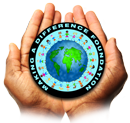Like any type of cancer, breast cancer doesn’t discriminate and affects women from all walks of life and all genetics, races, and cultures. However, while it doesn’t discriminate, it does disproportionately affect some more than others.
This is not just in the diagnosis rates or genetic causes of breast cancer as it relates to race, but in the rates of screening, stigmas surrounding a diagnosis, as well as in treatments and their outcomes for BIPOC women.
According to Breast Cancer Facts & Figures 2019-2020, which is an educational companion for Breast Cancer Statistics 2019, a scientific paper published by the American Cancer Society Journal, breast cancer is the most common cancer diagnosed among women in the United States and is also the second leading cause of death among women only after lung cancer. One in eight women in the United States will be diagnosed with breast cancer in her lifetime.
One common risk factor for breast cancer is being older, over the age of 50, and it has been shown that white women have the highest incidents rates across all demographics. However, while not fully understood, breast cancer is more common in Black women under the age of 45 than white women of the same age group. Also, “overall, Black women are more likely to die of breast cancer. For Asian, Hispanic, and Native-American women, the risk of developing and dying from breast cancer is lower.” Yet, survival rates still show a substantial disparity for late-stage diagnoses with a 5-year relative survival rate of 83% for Black women and 92% for white women. (Breastcancer.org, Breast Cancer Statistics)
Often the disparities experienced are because of social, environmental, geographical, economic, and cultural factors that affect incidence and prevalence rates, mortality and survival, screening rates, early detection, stigmas, treatment options, and financial burdens.
For lower-income women of color, who are more likely to experience poverty and other disparities with healthcare, they also typically have lower health literacy, have to travel longer distances to get screened, lack health insurance, and transportation to medical facilities. They are also more likely to be in service types of jobs that lack paid medical leave so they aren’t able to take time off of work for screenings and treatment. This means people who have cancer are diagnosed in the larger stages where mortality rates rise.
What’s interesting is that, unlike most other diseases, breast cancer rates are actually higher in more affluent communities. The difference comes after a breast cancer diagnosis. African American women have a 40% higher chance of dying from breast cancer than white women with the reasons being “rooted in a complex interplay of economics, power, racism and discrimination that lead to a variety of social injustices, including major inequities in healthcare.” (Breast Cancer Action — Disparities in Breast Cancer: Through the Breast Cancer-Care Continuum; Last revised 11/2013)
Breast cancer isn’t an issue of color, but the fact that more women of color die from this disease is alarming and researchers don’t fully understand, nor can they pinpoint the exact reason, why this is.
So, what are some things BIPOC women can do to better protect themselves and see better outcomes should they be diagnosed with breast cancer?
- Early detection is key to increased survival rates. Know that, if caught early enough and treatment is sought, you can beat a breast cancer diagnosis.
- Seek professional medical help and advice if you find anything unusual or alarming in your breasts (or any other area of your body).
- While it is natural to fear a breast cancer diagnosis, don’t give into the fear to where you pass off any symptoms you may have and don’t get screened.
- If you are diagnosed, know you aren’t alone. There are resources and support groups out there to help you talk through your feelings if a diagnosis occurs. Connect with other breast cancer survivors to learn about their experiences and what to expect.
- Let go of any stigma you might feel around a breast cancer diagnosis. Some women were raised to not talk about such personal things while others are embarrassed. But giving in to the uncomfortable feelings could cost you your life.
- Do a self-breast exam every month. Most often, a woman is the first person to find something unusual with her breasts. Doing a self-breast exam and touching your breasts is nothing to be embarrassed about and could actually save your life!
- Know that breast cancer can happen at any age doing a self-exam is still important regardless of your age bracket. Start getting a mammogram when your doctor says it is time.
- Advocate for yourself. Don’t let a health care professional pass off any of your symptoms or concerns believing you aren’t at risk or are too young to get breast cancer. Get or insist on a second opinion to make sure you’re taken seriously.

